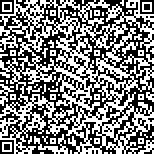| 摘要: |
| 目的 及时、准确地获取旱地作物类型、种植面积及空间分布信息,可为农业生产管理,国家粮食政策提供重要依据。文章主要是对河北省冀州市棉花、玉米、水体和建筑进行分类,比较不同时相及分类方法下RADARSAT-2数据对4种地物的分类精度。方法 (1)计算得到每个时相(2018年7月14日、8月7日、9月24日)全极化RADARSAT-2数据的39个特征;(2)结合随机森林分类器比较不同分解方法(Freeman分解、Yamaguchi分解、MCSM模型和Cloud分解)得到的特征对旱地作物的分类精度影响;(3)分析参与分类的特征数量和时相对分类精度的影响;(4)将多时相多特征相结合,确定研究区内旱地作物的最佳识别方案。结果 不同分解方法得到的特征越多、分类精度越高;就仅使用单景影像而言,在9月24日(玉米成熟期早期、棉花吐穗期中期)总体分类精度最高;不同分解方法得到的极化特征之间有一定的相关性,同一时相下,增加参与分类的极化特征数量不能有效提高分类精度;使用3个时相上117个极化特征,结合随机森林分类器,可以得到最佳分类精度(总体分类精度达92.89%,Kappa系数为0.885 9)。结论 结合多时相与多特征相RADARSAT-2数据,能够有效提高复杂种植结构下旱地作物的识别精度,该研究可为旱地作物种植面积的快速提取提供参考。 |
| 关键词: 旱地作物 极化分解 多分量散射模型 分类识别 随机森林 |
| DOI:10.7621/cjarrp.1005-9121.20210830 |
| 分类号:S17 |
| 基金项目:中央级公益性科研院所基本科研业务费专项“基于多时相极化SAR数据的旱地作物散射机制研究”(1610132019010);中央级公益性科研院所专项资金项目“基于合成孔径雷达数据的旱地作物识别与长势监测研究”(IARRP-2017-16) |
|
| CLASSIFICATION OF DRYLAND CROPS BASED ON MULTI TEMPORAL POLARIMETRIC SAR DATA |
|
Sun Zheng1,2, Liu Chang'an3, Liang Qingguo4, Zeng Yan1,2, Wang Di1,2
|
|
1.Institute of Agricultural Resources and Regional Planning, Chinese Academy of Agricultural Sciences, Beijing 100081, China;2.Key Laboratory of Agri-informatics, Ministry of Agriculture and Rural Affairs, Beijing 100081, China;3.National Geospatial Information Center, Beijing 100070, China;4.Shandong Survey and Design Institute of Water Conservancy, Jinan 250013, Shandong, China
|
| Abstract: |
| Timely and accurate acquisition of dryland crop type, planting area and spatial distribution information can provide an important basis for agricultural production management and national food policy. The purpose of this study is to classify cotton, corn, water body and buildings in Jizhou city, Hebei province, and compare the classification accuracy of Radarsat-2 data under different phases and classification methods for the four ground objects. Firstly, 39 features of the fully polarized Radarsat-2 data for each time phase (July 14, August 7, and September 24, 2018) were calculated. Secondly, the effects of the characteristics obtained by different decomposition methods (Freeman decomposition, Yamaguchi decomposition, MCSM model and Cloud decomposition) on the classification accuracy of dryland crops were compared with the random forest classifier. Then, the influence of the number of features and the temporal relative classification accuracy was analyzed. Finally, the optimal identification scheme of dryland crops in the study area was determined by combining multi-temporal and multi-feature. The results showed that the more features obtained by different decomposition methods, the higher classification accuracy. The classification accuracy was highest on September 24 (early stage of maize maturation and middle stage of cotton heading). There was a certain correlation between the polarization characteristics obtained by different decomposition methods. At the same time, increasing the number of polarization characteristics involved in the classification cannot effectively improve the classification accuracy. The optimal classification accuracy (the overall classification accuracy was 92.89% and the Kappa coefficient was 0.885 9) could be obtained by using three time-phase up to 117 polarization features combined with the random forest classifier. This study can provide reference for rapid extraction of upland crop acreage. |
| Key words: dryland crop polarization decomposition MCSM classification and identification random forest |

